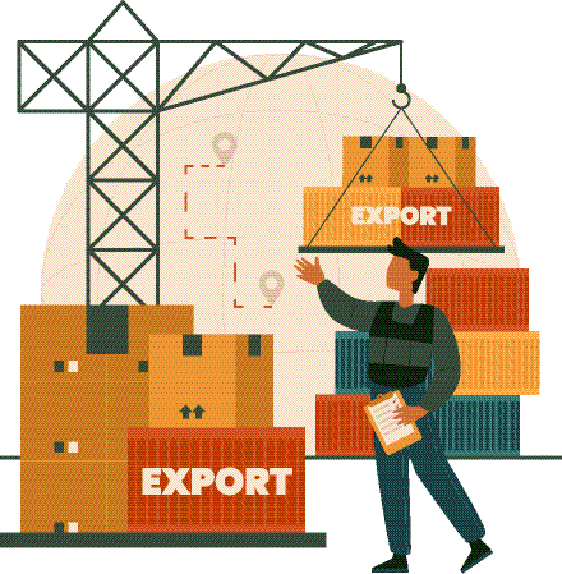Export diversification has long figured prominently in discussions about the country's export strategy, driven primarily by the overwhelming reliance on ready-made garments (RMG). The push for diversification stems from the need to strengthen the overall export sector by reducing dependence on a single product and enhancing the performance of other products in the export basket. The underlying argument here is: the export basket has hundreds of products but as most of them suffer from poor performance, diversifying the basket means adding vigour and strength to the products so that the export sector can rid itself of over-reliance on a single product. Keeping this in view, the government has been framing policies from time to time with special emphasis on prospective products by way of various incentives and supports. To say that these have not at all worked is not true, but there is no visible momentum in exports, except in respect of only a few core products, including the RMG. Actually, diversifying is a package comprising scores of issues from product development, product adaptation, quality assurance, market demand, compliance, competitive pricing and so on.
So, when one speaks about diversification, it must not be seen as a remedy readily available. It has to be worked on, in a planned manner taking into account all relevant factors as a package. In the past the Export Promotion Bureau undertook many foreign aided export development projects. However, as many of the projects approached the aforementioned package only partially, the outcome was far from satisfactory.
Recently, it has been reported that a multi-donor funded export diversification project of the government is languishing with very little works done so far. No doubt a pathetic case, it needs to be brought under the scanner to see if the project had been completed in due time, could we say its goal was accomplished? Unfortunately, No. This is because such projects can at best disseminate information on various relevant issues including training the manpower with required knowledge. But there is a lot more to the job, and these can only be taken up by a comprehensive medium-term plan with sufficient fund allocation and required infrastructural facilities.
The reason diversification figures so prominently in public discussions on export is because of its many tangible benefits.
Diversifying the export composition protects a country from the risk of an unpredictable declining trend in international prices of exportable commodities that, in turn, leads to unstable export earnings. Export diversification could, therefore, help out to stabilise export earnings in the long run.
Due to the absence of export diversification in developing countries, decline and fluctuations in export earnings have negatively influenced income, investment, and employment. Diversification provides the opportunities to extend investment risks over a wider portfolio of the economic sector which eventually increases income. Diversification can also be seen as an input factor that has the effect of increasing the productivity of sub-sectors or what is called backward linkage industries. Furthermore, economic growth and structural change depend upon the type of products that are being traded. Thus export diversification allows an economy to achieve some of its macroeconomic objectives namely sustainable economic growth, satisfactory balance of payment situation, employment, and redistribution of income.

There are different strategies adopted by different countries, depending on the country-specific situations. In the Asian region, Thailand is a good example of pursuing diversification in keeping with the resources and infrastructure the country could make use of. It was a two-pronged strategy involving thrust on natural and agricultural resources on the one hand, and on the other, upgrading labour-intensive manufacturing. China, along with some East Asian countries, benefited from the rise in regional economic integration through the development of cross-country production networks courtesy of vertical integration of production chains.
Strategising is what really matters most, and to do that, intensive research is required to identify which model to stick to. Also this would require product and market-specific studies to be able to tell the strengths and weaknesses in respective areas. However, considering the trends of Bangladesh's exports, it is not too difficult to identify some potential and prospective products, and although there are provisions of fiscal and other incentives for them, the fact remains these supports are of little use in the absence of a medium-to-long term strategy to stimulate the products with a robust supply chain. That is to say, facilitation does not mean incentives alone but drawing up and working on a roadmap for product development and putting in place institutional and infrastructural support in a smart manner.
For quite sometime, Bangladesh's export basket comprises a core group of products besides RMG, the number one product. These include: jute and jute goods, leather and leather goods, frozen foods including shrimp, agro-processed foods, cement, pharmaceuticals etc. In around a decade or so, a handful of other products have demonstrated great potential, such as-- shipbuilding, ICT, light engineering, plastic. The government does recognise the importance of the emerging items, but whatever facilities they received remained confined to fiscal incentives.
No doubt, confronting the post-LDC challenges requires a robust export sector reinforced by policy reforms in order to provide impetus to diversification. Strategising a proper roadmap must be at the focal point to move in that direction.
wasiahmed.bd@gmail.com
© 2025 - All Rights with The Financial Express
